
Inkaterra Reserva Amazonica
Situated about 45 minutes by boat from Puerto Maldonado
 9.2 |Wonderful
9.2 |Wonderful 4.5 |Excellent
4.5 |Excellent

When it comes to nature and wildlife in Peru, the Amazon Rainforest is the place to be. The lush rainforest covers nearly two-thirds of the country, but is home to only 5 percent of its population. Adventurous travelers can explore this region with a professional guide at a jungle lodge. Cruise remote Amazonian waterways, make friends with local communities, swim with pink river dolphins, and walk under the canopy tree homes for flitting birds, snoozing sloths and swinging monkeys.
For nature lovers, a trip to Peru is not complete without exploring the largest rainforest in the world. Wherever you go, you’ll have a chance to spot wildlife, visit lush jungle lodges and participate in ecotourism. There are different highlights depending which part of the rainforest you visit.
Let’s explore the three most popular destinations in the Peruvian Amazon:
Why choose here? Puerto Maldonado is at the southern gateway to the Amazon jungle, with Madre de Dios River weaving through it. A visit to this region affords visitors with easy access to Tambopata National Reserve , a wide array of excellent jungle eco-lodges, and glimpses of oxbow lakes, macaws at clay licks, and maybe even a giant river otter. This part of the Amazon has Bolivia just to the east and Cusco to the west.
Learn more about Puerto Maldonado below.Why choose here? To the northeast of the country, you’ll find the very remote city of Iquitos deep in the Peruvian jungle and only accessible by flight. This is the easiest place to see the Amazon River in Peru, and it also offers quick access to the Pacaya-Samiria National Reserve. As Peru’s largest natural protected area, this is a wonderful place to spot monkeys, sloths and majestic pink river dolphins or have rich cultural experiences meeting those who call the reserve home.
Learn more about Iquitos below.Why choose here? Manu National Park is a treasure in and of itself. Located between Puerto Maldanado and Machu Picchu, this is a wonderful spot for wildlife viewing, bird watching and river exploring on Manu River. Elevations in the park range from 500 to 14,000 ft (150-4,200 m) so you can see different biospheres from the forest floors to the mountain peaks. It’s a very unique place with a rich cultural heritage, where the Andes and the Amazon meet.
Learn more about Manu National Park below.

The jungle city of Puerto Maldonado represents a different side of Peru. Temperatures are warmer than in the frigid Andean highlands. Boats are the easiest mode of transportation. And the waterways provide entry into nature reserves where exuberant greenery flourishes and rare fauna frolics.
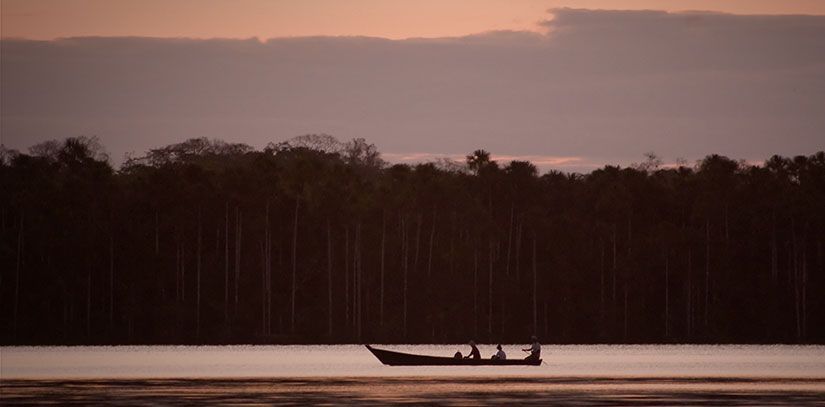
For a full jungle immersion, spend 2 or 3 or more nights at a rainforest lodge. By day, enjoy excursions along jungle trails, to the tops of canopy towers, and into the corners of hidden lagoons where caimans and otters and sometimes jaguars bathe in the sun. After dark, relax in a hammock rocked by a warm jungle breeze and marvel at the mysteries of the rainforest’s nocturnal world.
Puerto Maldonado is broken up into a dry season (May-October) and a wet season (November-April). However, being that it is a tropical rainforest, even the dry season tends to have some rain. While many would opt for the drier season, in reality there are pros and cons of both.
Pros of the dry season are that trails are less muddy and there is a higher probability of seeing parrots and macaws at the clay licks. Cons of the dry season are hotter temperatures – and sunny days usually see less bird activity and amphibians can be harder to spot.
Pros of the wet season are that temporal wetlands make it easier to see reptiles and amphibians and there is a cooler temperature. Cons of the wet season are muddy conditions, less likely to see birds at the claylicks and a higher chance of flight delays.
The southern Peruvian Amazon rainforest climate is broken up into two distinct seasons: the dry season and the wet season.
Dry Season
May through October are usually the driest months in the Amazon. Between June to September there are periodic cold spells called friajes that can drop the temperature to 10°C (50°F) for a couple days at a time. Friajes are cold fronts the blow up from Patagonia and then whip down over the southern jungle from the Andes.
Wet Season
The Amazon is a rainforest, so really there's a chance of rain throughout the year. But more constant rains that define the region’s wet season begin in November and continue to April. November and December usually receive the most rainfall.
Puerto Maldonado is the main hub for exploring the southern Peruvian Amazon where the Madre de Dios River intersects with the Tambopata. For a proper Amazon adventure introduction, hop aboard a wooden boat powered by a small motor in Puerto Maldonado and cruise winding Amazon waterways to your remote jungle lodge. Ecotourism is a cornerstone of the developing travel industry in Peru’s Amazon.
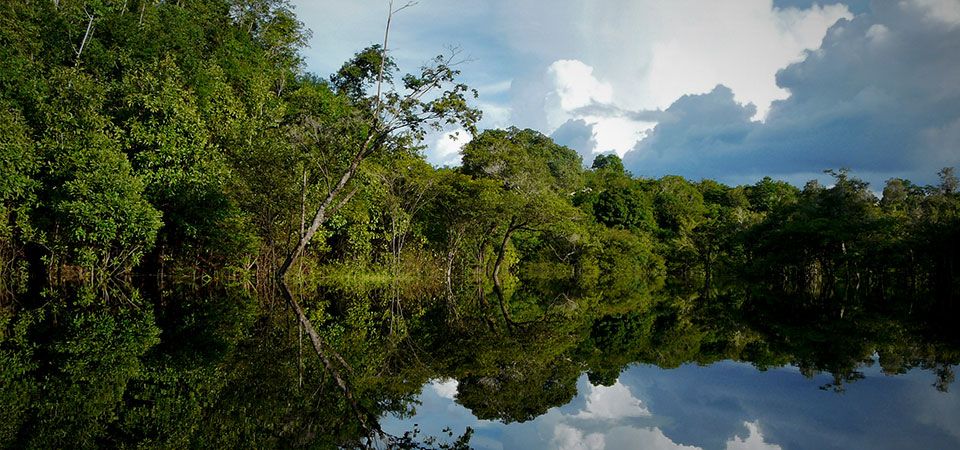
Our team proudly partners with lodges that practice low-ecological footprint programs (recycling, use biodegradable bath and cleaning products, utilize low-to-no energy devices). Jungle lodges not only help support native communities, but also help spread awareness about the continued need for conservation efforts amid the looming threats that cause irreversible damage.
Tambopata National Reserve encompasses 275,000 hectares (680,000 acres) of protected Amazon rainforest in the southeastern part of Peru. A sanctuary of incredible biological diversity, the reserve features stunning Oxbow lakes and different forest habitats. More than 670 bird and 1,200 butterfly species join a long list of endangered animals, such as giant otters, harpy eagles, and jaguars, who call this place home. The reserve boasts numerous clay licks along exposed riverbanks where macaws and parrots congregate.
Bahauja-Sonene National Park hugs the southern part of the Tambopata National Reserve. The enormous 1 million hectare (2.47 million acre) park protects the country’s only tropical humid savanna and some of its most biodiverse tracts of rainforest. Access to Bahauja-Sonene National Park is very limited.
Did you know that two-thirds of the world’s plant and animal species make their home in the rainforest? And new species are always being discovered! The Amazon is the largest rainforest on earth and its crazy cool biodiversity sparks a cord of fascination with almost every adventurous traveler!
From cute and fuzzy to downright bizarre, the critters of the Amazon are a major highlight of any jungle adventure! Howler monkeys swing overhead, families of 1.8-m (6-ft) giant otters make their homes in the Oxbow lakes, and three-toed sloths, when present, are hard to miss! Though rarely seen, even by long-stay researchers, endangered pumas and jaguars call these tropical forests home too. In southern Peru, the clay licks in the Tambopata and Manu national parks are privileges sites to observe a high diversity of rainbow colored macaws, parrots, and parakeets.
Once you arrive in Puerto Maldonado, your tour guide will pick you up and guide you to the dock to board the open air boat to your jungle lodge. Usually around 1-3 hours to reach jungle lodges near Puerto Maldonado.
There’s plenty to see and do in the jungle city of Iquitos . Explore the local floating market at Belen. Sail to Isla de los Monos for fun with mischievous monkeys. Swim with dolphins. Wander the city seeking out the architectural legacy of the early 20th century rubber boom. Visit museums or book a tour to learn more about indigenous Amazonian cultures.
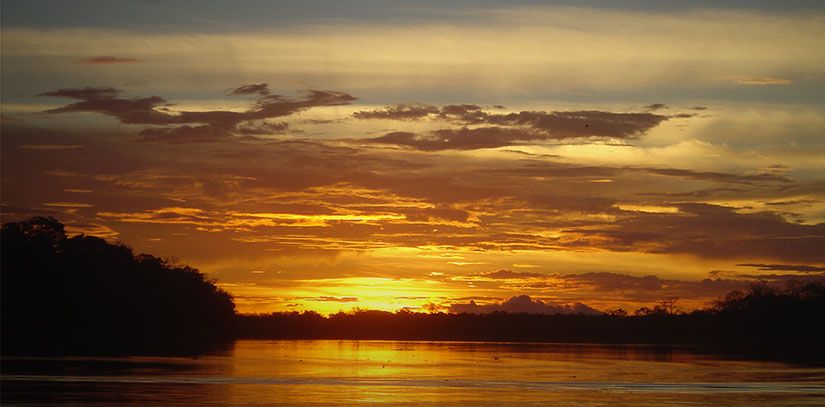
Away from the city, Iquitos provides access to excellent jungle lodges located up and down river. It’s also the point of departure for cruise ships destined for the Amazon headwaters.
Like any other area in the Amazon, the best time to visit the rainforest depends on your preference. The Amazon is a year round destination, with rainfall expected throughout the year. However, Iquitos is broken up into high water and lower water seasons, each of which have their pros and cons to consider.
Pros of high water season (December to May) is that it allows boats to venture deeper into remote parts of the jungle. During this time, you’re likely to see more birds and mammal species living in the canopy. Cons is that rainfall is usually heavier (December through March), there are generally more mosquitos, there aren’t as many usable hiking trails
Pros of low water season include more trails to explore the jungle on foot, fewer mosquitos, higher chance to see migratory birds and peak season for fishing. The main con of low water season is that remote lakes and small creeks (only accessed by boat) cannot be visited.
The Amazon experiences a warm, tropical climate with high humidity. Rainfall occurs throughout the year. Seasons in northern Peru’s Amazon Basin are divided between months with high water and low water. Water level of the rivers fluctuate as much as 12 meters (40 feet), resulting from the rain and snowmelt runoff flowing down from the eastern slopes of the Andes Mountains.
High Water Season
Low Water Season
The Amazon River, or Rio Amazonas, is the second longest river in the world. The river and its tributaries wind through dense tropical jungle in Peru, Brazil, Bolivia, Ecuador, and Colombia. From the city of Iquitos, travelers can take a luxurious cruise on the mighty Amazon River, which flows across northern Peru, or stay at a jungle lodge along its shores. Water activities include wildlife spotting from a canoe, swimming with pink river dolphins, paddle boarding, and piranha fishing.
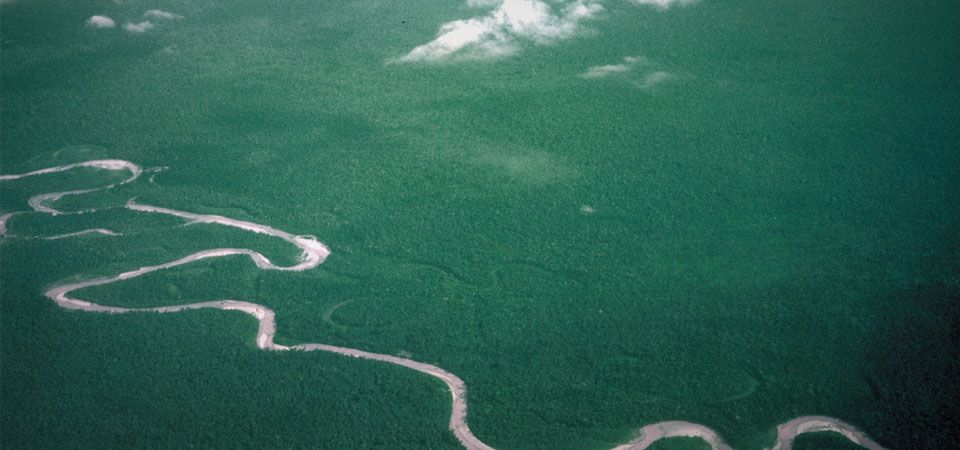
Amazon cruise packages are generally more expensive than a jungle lodge stay, but the additional cost comes with definite perks, including luxury facilities and endless rainforest and river panoramas from your private cabin. Ask your travel advisor for more information about cruising the Amazon in style.
Life in the Amazon rainforest takes many forms below, within, and above its leafy green canopy. It is home to big-eyed monkeys rustling amid trees, bright bird species, stealthy river creatures and other ecological oddities. In northern Amazon tributaries, pink river dolphins are but one unique animal that can be spotted in the national parks surrounding Iquitos. Keep your eyes peeled and camera in hand because seeing these Amazon rainforest animals in their natural habitat may well be the highlight of your jungle adventure. Jungle lodges surrounding Iquitos are the perfect hub for convenient access to remote jungle reserves.

Travel by boat from Iquitos to the Yaguas and Bora communities for a unique cultural experience. A guide from the community will explain the local way of life and the history. During a visit, the local men, women, and children share aspects of their culture, including language, dance traditions, and artistic expression, with visitors. Beautiful jewelry, weavings, and art pieces are made by local artisans and available for sale.

The best way to experience the stunning beauty of the Amazon rainforest and see wildlife is at a remote jungle lodge accessible by river boat from Iquitos. Don’t worry, you don’t have to sacrifice comfort to have a true jungle adventure! The jungle lodges recommended by our team have running water, cushioned beds, and serve tasty meals. See the Hotels section on this page for more information. During the day, explore the nearby national reserves on a variety of guided wildlife, canopy, walking, cultural, and river tours.

The city sprawls outward from the Plaza de Armas, surrounded by streets dominated by moto-taxis. The Iron House, located on a corner of the main plaza, and the numerous beautiful mansions lining the city’s riverfront malecon are evidence of the wealth brought to Iquitos during the rubber boom era. Visit one of the city’s museums for a dose of Amazon culture. During your city exploration, take a break in a shady seat at a local cafe or restaurant to soak in the energy of this busting jungle hub at a slower pace.

A tour to the shanty town of Belen market and its residential area offer travelers a truly unique cultural experience. Morning visits to the Belen market are the best because it’s less crowded. Your guide will point out exotic fruits and veggies used in jungle cuisine, and likely lead you down Shaman’s Alley, where medicinal and spiritual Amazon remedies are sold. Next, hire a boat or canoe and explore the waterways of the Belen neighborhood where houses are built on stilts over the Itaya River or on top of balsa wood rafts.
Once you arrive in Iquitos, your tour guide will pick you up and guide you to the dock to board the open air boat to your jungle lodge. Usually around 20 minutes to 1 hour to reach jungle lodges near Iquitos.
With elevations spanning between 150 m and 4,200 m of elevation, Manu National Park encompasses an astounding variety of climates and a bewildering number of plant and animal species. So many, in fact, that researchers continue to find undiscovered flora and fauna even after decades of intensive research. Accessible from Cusco and from Puerto Maldonado , Manu and its handful of lodges provide a chance to experience a wonderland of habitats from cloud forest to lowland rainforest in a setting unlike any other in Peru or the world.

Keep in mind that this is the rainforest and showers are possible at any time of year. Officially, the rainy season is from December to March. May to August is comparatively drier, though also much warmer.
Manu’s extreme topography creates multiple microclimates. Lower elevation areas are hotter with average temperatures ranging from 35 C during the day to 25 C at night. In Manu’s higher elevation areas, temperatures are generally cooler. Expect warm temperatures during the day and cool nights.
Temperatures can drop after heavy rains, reaching as low as 10 C (50 F). Another weather phenomenon, called “surazo” or “friaje,” occurs when polar winds from Patagonia sweep up the mountains and into the rainforest. Temperatures can be as low as 8 C (46 F).
Manu National Park Facts

Manu Biosphere Reserve
The Manu Biosphere Reserve is divided into 3 zones:
Paucartambo
Located 2.5 to 3 hours from Cusco, Paucartambo is a point of transit on the overland route between the imperial Inca city and Manu National Park. Paucartambo is also famous for a 5-day festival in mid-July that draws revelers from all over the region in celebration of the Virgen del Carmen Festival.
Kosñipata River Valley
From Paucartambo, continuing past Acjanaco Pass (12,630 ft / 3,850 m) and the turnoff to Tres Cruces, the road begins its ascent into the gorgeous Kosñipata Valley dropping thousands of meters in elevation. This the place to go for river rafting and mountain biking tours through Peru’s gorgeous cloud forest mountains. It’s also the route to rainforest lodges in Manu including Paradise Lodge, Gallito de las Rocas Lodge, and Erika Lodge. The Quechua word kosñipata means “place of smoke” in reference to the heavy mists that shroud the eastern flanks of the Andes as they plummet to meet the Amazon.

Boca Manu
Located at the meeting point of the Madre de Dios and the Manu river, the village of Boca Manu has a small airport that receives charter airplanes. It’s also a stop on the route over land and by boat from Puerto Maldonado. The checkpoint to go further into the park is in nearby Limonal.
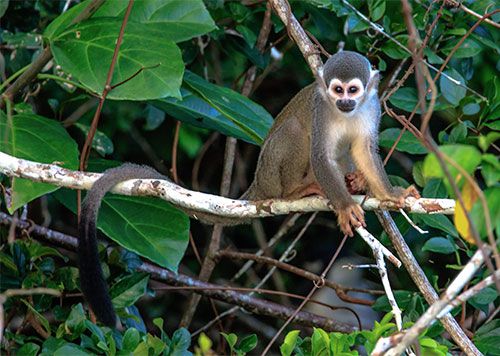
Monkeys, bugs, and reptiles abound in the rainforest. If you’re lucky, you might also see the otorongo (jaguar), black panther, tapir, collared peccary, deer, and capybara. Forest trails and cochas (secluded lagoons) are the best place to spot wildlife while learning about life in the rainforest, medicinal plants and food.
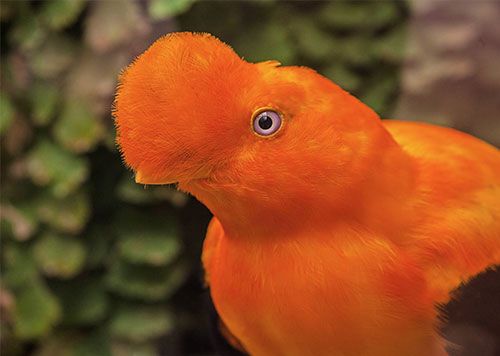
Many travelers come to Manu specifically for the birds. And with one of the largest bird lists in the world, Manu certainly merits such a specific interest. Airborne residents include the harpy eagle, jabiru, roseate spoonbill, and the cock of the rock.
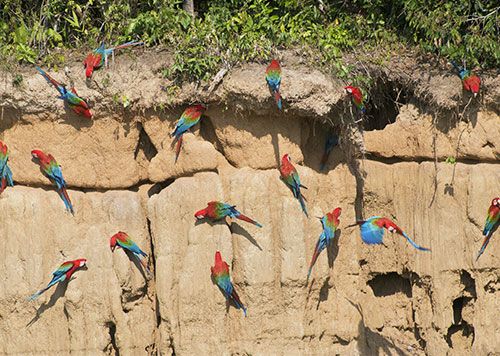
Special attraction in Manu where travelers can see macaws, parrots, and parakeets flock by the thousands for morning meals of clay.

See the rainforest from the perspective of creatures who live at canopy level. Scattered tree towers in Manu range from 30-40 meters (100-130 feet) tall. Standing on the platform reveals a alternate dimension of rainforest activity that can’t be seen from the forest floor.

An additional 60km from Paucartambo, Mirador Tres Cruces is a lookout point over the meeting place of the Andes and the Amazon. On clear days, it’s possible to see the peak of the massive Ausangate all the way down into the depths on the jungle basin.
There are three routes to get to Manu:
What to Pack
For a jungle tour, it is important to pack light and bring only the necessary equipment and clothing. Space on the river boat to your lodge is limited.
Wifi Access
Not all jungle lodges have WiFi, so if this is a necessity of yours, you will want to check with your travel advisor or directly with the lodge before traveling. However, even if WiFi is available, it is usually spotty and slow. A visit to the Amazon is more of an “off-the-grid” kind of experience. To keep your loved ones in the know, simply inform them of which days you’ll be in the jungle and alert them to the possibility that you will have little to no service.
Safety Tips
Most of your free time will be in the comfort of the grounds of your lodge. If out on an excursion, be sure not to wander off but rather to stay with the group. It is best not the wander off alone at night, as it is, in fact, a jungle with potential of confronting a range of wild animals. Be sure to have a reusable water bottle with you for day trips and hikes.
Vaccines
For travel to tropical forest regions, the US Travel Advisory recommends malaria medication and the yellow fever vaccine. Talk with your doctor before a trip to the Amazon in Peru to discuss the best option for you.
Mosquitos
Protect yourself from the itchy bites of mosquitoes by wearing loose fitting long shirts and pants. Apply insect repellant to exposed skin. At night, use the mosquito net hanging over your bed.
Amazon Wildlife
Guided excursions into the Amazon rainforest to spot unique animals are included in a stay at almost every jungle lodge in the Iquitos region. Naturalist guides point out unique wildlife, and teach you how to observe them without disturbing them or possible endangering yourself. Stay on designated footpaths and do not get separated from your tour group.
Drinking Water
Bottled water and safe filtered drinking water are provided to jungle lodge guests. A reusable water bottle is always handy in the jungle.
Getting to your lodge
Many jungle lodges are only accessible by river transport. In Iquitos and Puerto Maldonado, lodge representatives greet travelers at the airport and then accompany them all the way into the jungle. River boats are typically open-air with a covering, much like a pontoon boat.





Many jungle lodges work closely with local communities. Posada Amazonas is a popular jungle lodge near the Tambopata National Reserve that’s owned in partnership between the native Ese’eja community and Rainforest Expeditions. Visiting a local farm or traditional community clinic offers great insight to how locals live in harmony with the Amazon.

Situated about 45 minutes by boat from Puerto Maldonado
 9.2 |Wonderful
9.2 |Wonderful 4.5 |Excellent
4.5 |Excellent
Situated about 25 minutes by boat from Puerto Maldonado
 9.8 |Exceptional
9.8 |Exceptional 4.6 |Excellent
4.6 |Excellent
Situated about a 2-hour transfer (drive + boat) from Puerto Maldonado
 |
| 4 |Very good
4 |Very good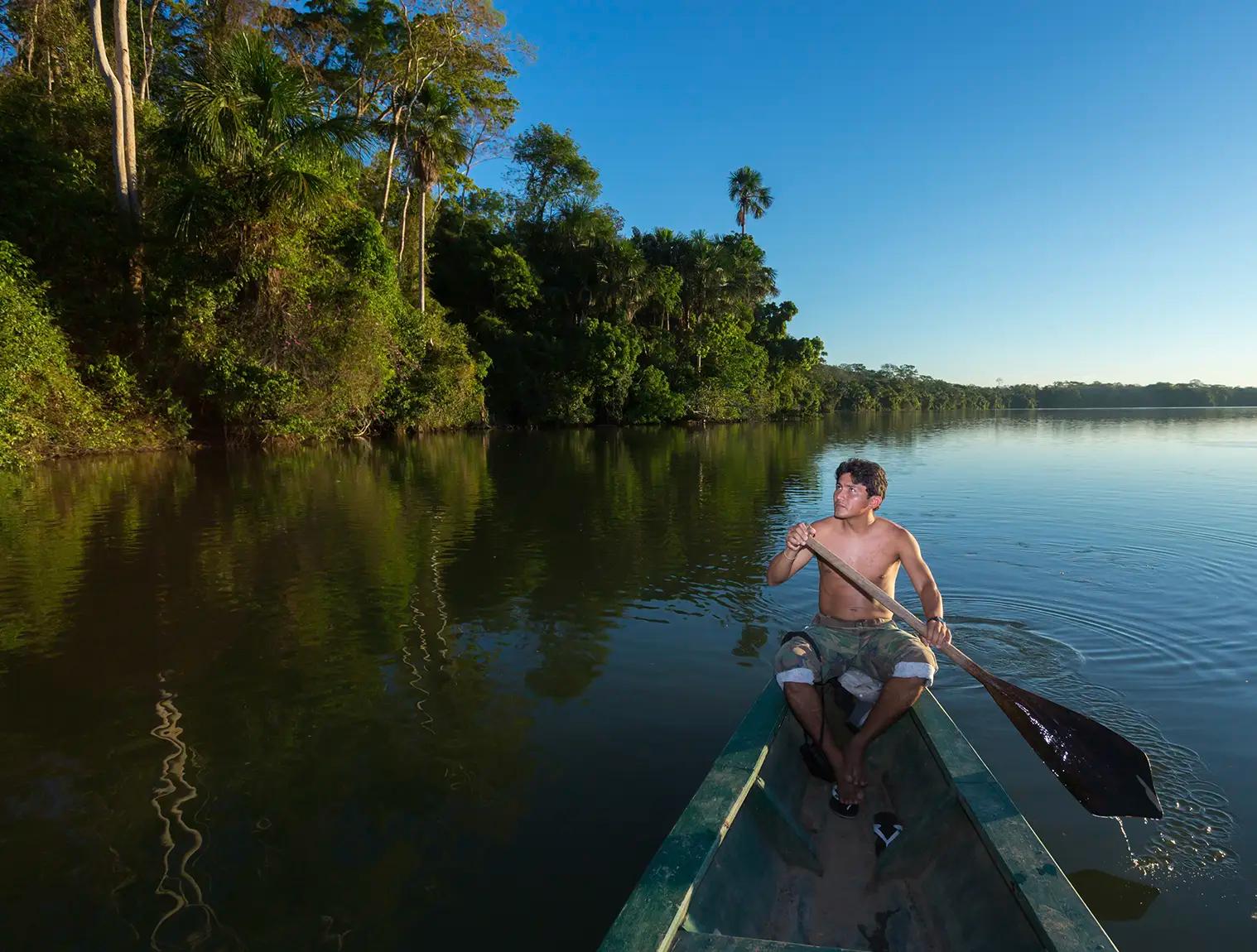
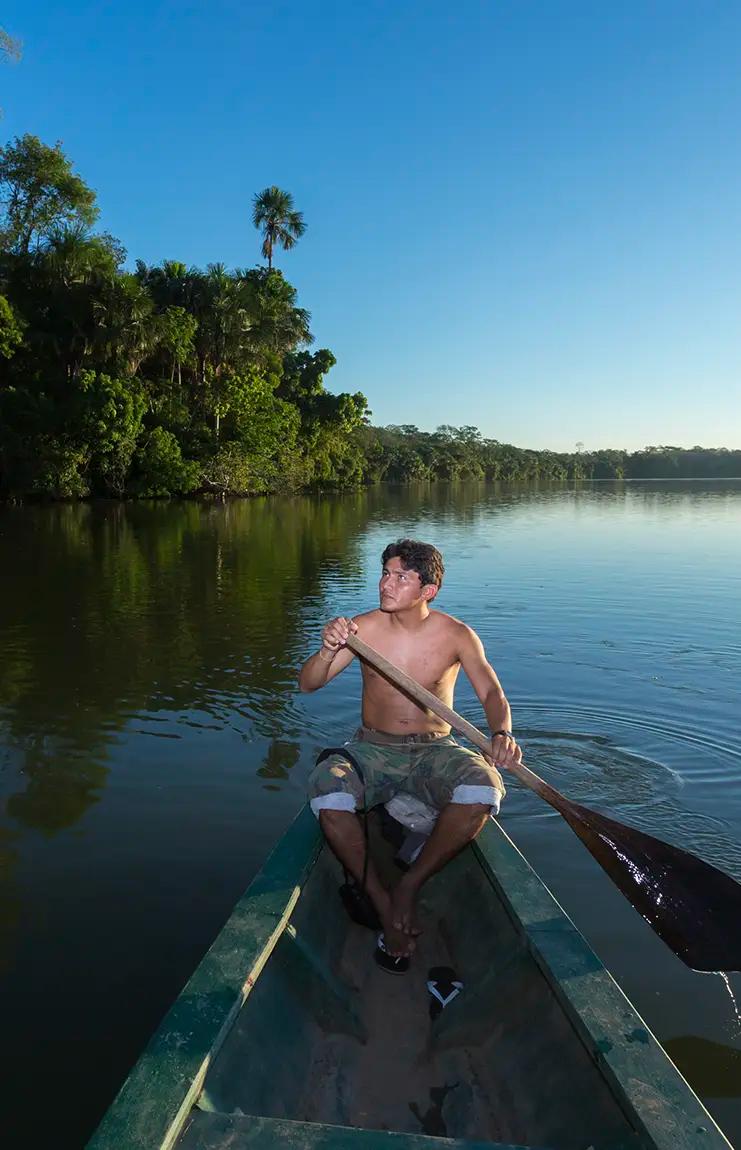
9 days from $1939
Amazon, Cusco, Sacred Valley and Machu Picchu


11 days from $2459
Amazon, Cusco, Machu Picchu & Titicaca
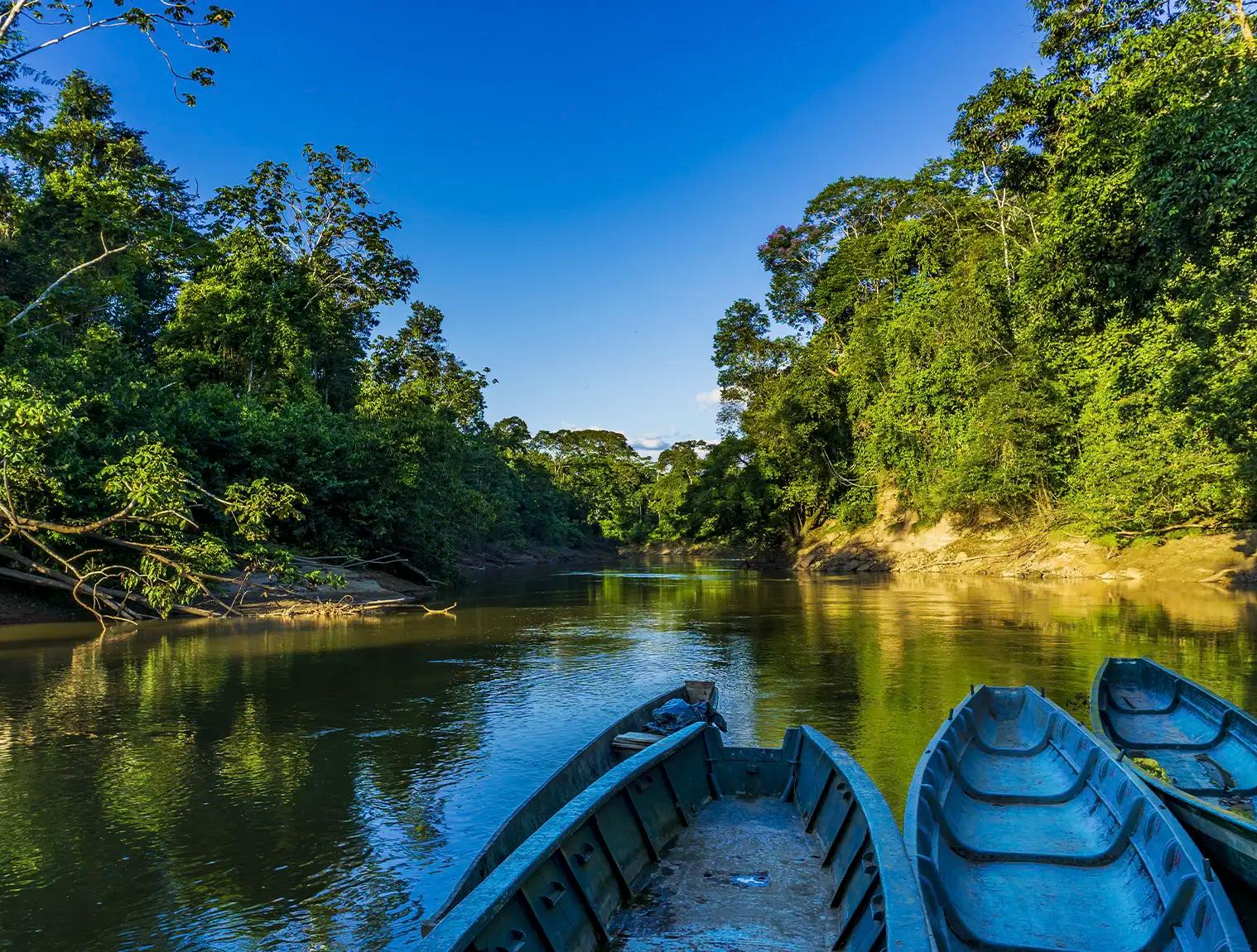
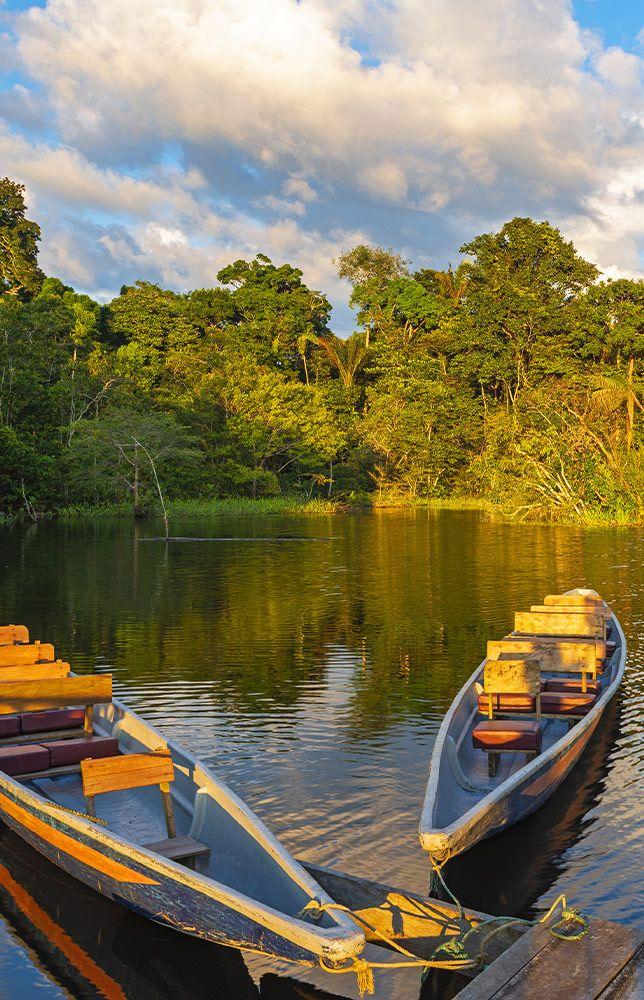
12 days from $2639
Machu Picchu, Sacred Valley, Cusco, Amazon, Arequipa & Colca Canyon


9 days from $3759
Cusco, Sacred Valley, Machu Picchu, Lima & Amazon Cruise
Email: [email protected]
Sign up to receive our newsletter for great articles, stunning photos, and special deals.